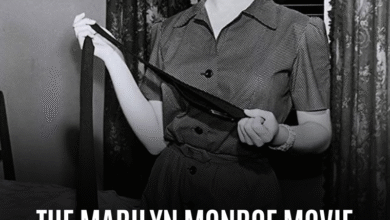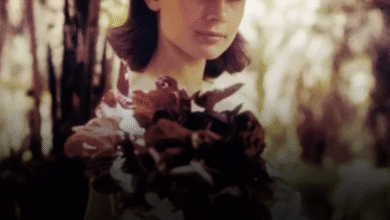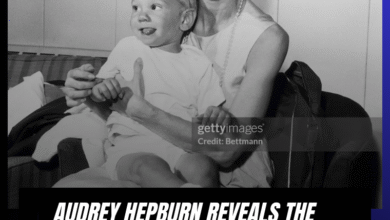Audrey Hepburn’s War-Torn Childhood: The Untold Struggles That Shaped a Star
OPINION: This article may contain commentary which reflects the author's opinion.
Audrey Hepburn, one of Hollywood’s most beloved icons, was born on May 4, 1929, in Brussels, Belgium, and became known for her graceful presence on-screen and her remarkable humanitarian efforts later in life. However, much of her childhood, particularly during World War II, was marked by hardship, loss, and an adolescence that would shape both her character and career. This lesser-known aspect of Hepburn’s life, characterized by terror, broken dreams, and resilience, is a testament to her inner strength and later contributions to humanity.
The War-Torn Early Years
In 1939, as World War II began to engulf Europe, Hepburn’s mother, Ella van Heemstra, moved her young daughter from England to the Netherlands, hoping to find safety in what was believed to be a neutral country. However, the German invasion in May 1940 shattered that illusion, thrusting Audrey and her family into the turmoil of occupation. For the next five years, from 1940 to 1945, Hepburn lived under Nazi control, experiencing the harsh realities of war, scarcity, and constant fear. Her family was directly impacted, with political and personal losses that left indelible scars on her childhood.
Audrey’s parents, particularly her mother, had complex backgrounds. Her mother was a fascist sympathizer who had met Adolf Hitler before the war, a detail that Hepburn rarely spoke about publicly. This complicated family dynamic, combined with the war’s ravaging impact, created a turbulent environment during her formative years.
The Impact of Family Losses
The devastation of the war was felt keenly by Audrey and her family. Her uncle, Otto van Limburg Stirum, was executed in 1942 for his role in the Dutch resistance, a personal tragedy that deeply affected Audrey. Additionally, her half-brother Ian was deported to a labor camp in Berlin, while her other half-brother, Alex, went into hiding to avoid persecution. These harrowing events forced the Hepburn family to relocate to Velp, where they lived with Audrey’s grandfather, Baron Aarnoud van Heemstra, in an attempt to escape the ongoing danger.
The graphic novel Audrey’s War by Salva Rubio and Loreto Aroca, paints a vivid picture of how these losses and the constant threat of violence shaped Hepburn’s adolescence, marking it with terror and deep emotional trauma. The book highlights how these experiences, particularly the grief and loss of loved ones, contributed to the compassion and humility that would define her personality. Rubio notes, “In addition to an impeccable career in theater and film, she left us an example of resilience, overcoming obstacles and being true to herself.”
Involvement in the Resistance
While Hepburn’s involvement in the Dutch resistance has been the subject of debate, it is widely acknowledged that she played a role in aiding the resistance during the war. She participated in the “Zwarte Avonden” (black evenings) from April 1944 onwards, where she danced at illegal gatherings to raise funds for the resistance. These events were vital in supporting families in hiding, including many Jews, and providing supplies to those resisting the Nazi occupation.
Hepburn also worked directly for the resistance, delivering messages, possibly food, and assisting downed Allied airmen in 1944. Her fluency in English made her an invaluable asset in these operations. A harrowing encounter with Nazi police during one of her missions demonstrated her quick thinking and courage. She avoided suspicion by picking wildflowers and presenting them as a distraction, managing to escape undetected. However, while some accounts detail her involvement, others, such as a 2016 report by the Airborne Museum ‘Hartenstein,’ question the extent of her direct actions. Regardless of the specific details, Hepburn’s efforts during the war underscored her courage and determination in the face of danger.
The Shattering of Her Ballet Dream
Before the war, Audrey Hepburn dreamed of becoming a ballerina, a passion sparked by seeing Sadler’s Wells perform. She attended the Arnhem Conservatory from 1939 to 1945, becoming a star pupil under Winja Marova. However, as the war worsened, Hepburn was forced to give up her dream of a ballet career. By the age of 15, malnutrition, coupled with the demands of registering with the Reich Chamber of Culture, made it impossible for her to continue pursuing dance. The “Hunger Winter” of 1944-45, during which more than 20,000 Dutch people perished from starvation and cold, severely affected her health, causing anemia, edema, and stunted growth.
This period of deprivation, including days spent without food, not only took a physical toll on Hepburn but also shattered her hopes of becoming a professional dancer. Her health issues, including childhood malnutrition and various chronic conditions, forced her to adapt and find new ways to survive, which ultimately led her to acting.
Post-War Struggles and Recovery
By the end of the war in 1945, Hepburn was gravely ill, suffering from jaundice, anemia, edema, and respiratory infections. At one point, she was saved by penicillin purchased with black market cigarettes from Micky Burn, a British resistance fighter who had helped her during the war. These experiences, from the trauma of war to her physical ailments, shaped the rest of Hepburn’s life, both personally and professionally.
Conclusion: A Legacy of Resilience and Compassion
Audrey Hepburn’s adolescence, marked by the terror of war, the loss of family members, and the shattering of her dreams, laid the foundation for the woman she would become. Her early experiences with hardship and loss influenced not only her career but also her deep commitment to humanitarian causes, particularly her work with UNICEF, where she was appointed Goodwill Ambassador in 1989. Hepburn’s story is one of resilience, demonstrating how an adolescence filled with broken dreams and challenges ultimately contributed to her legacy as both a beloved actress and a compassionate advocate for children in need.
In looking back on Hepburn’s formative years, it becomes clear that the war and its toll on her family shaped her into the icon we know today—not only for her beauty and talent but for her inner strength, kindness, and unwavering determination to make a difference in the world.



